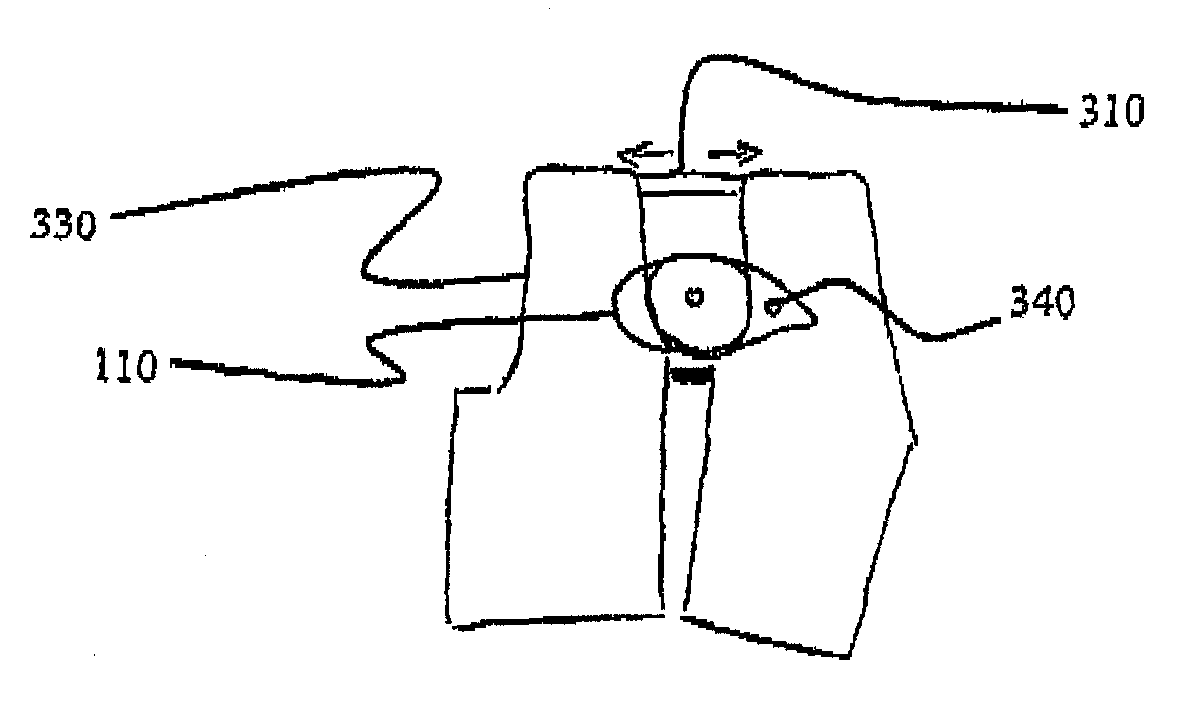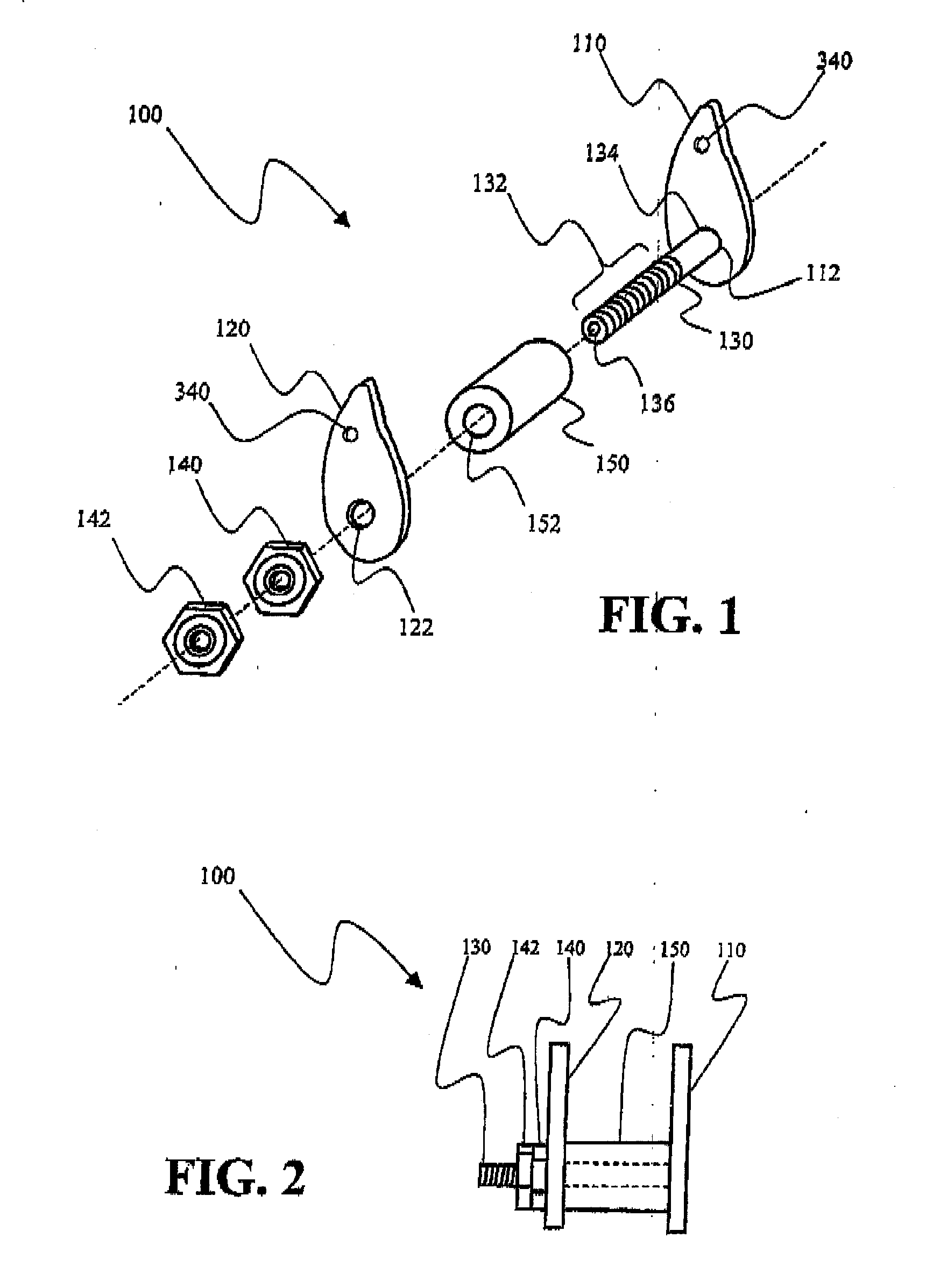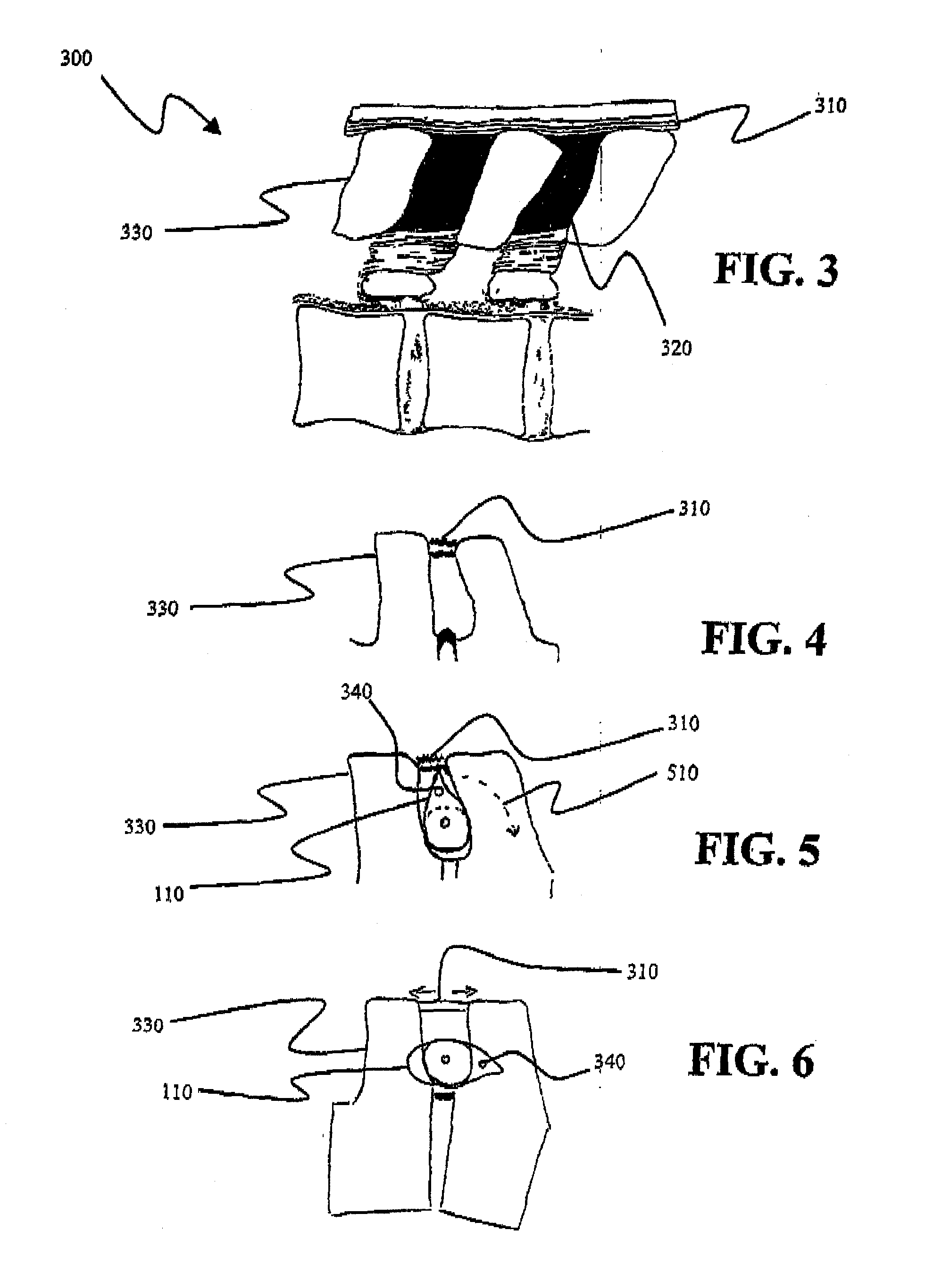Interspinous Internal Fixation/Distraction Device
a technology of interspinous fixation and distraction, which is applied in the field of interspinous fixation and/or distraction devices, can solve the problems of back pain, invasive surgical correction, patent, etc., and achieve the effects of avoiding any potential neurological injury or late epidural scarring, improving interspinous fixation and/or distraction, and minimally invasive implantation
- Summary
- Abstract
- Description
- Claims
- Application Information
AI Technical Summary
Benefits of technology
Problems solved by technology
Method used
Image
Examples
Embodiment Construction
[0023]As discussed in the Brief Summary of the Invention section, the present subject matter is particularly concerned with interspinous fixation and / or distraction devices designed for minimally invasive implantation in the spine, particularly, but not exclusively, in the lumbar area of the spine. It should be clearly understood that although the principle portion of the present disclosure is directed to apparatus and methodologies for implantation of such apparatus in the lumbar area of the spine, such disclosure is not meant to be a limitation on the present subject matter as the apparatus and methodologies disclosed herein may also be associated with other areas of the spine.
[0024]Selected combinations of aspects of the disclosed technology correspond to a plurality of different embodiments of the present subject matter. It should be noted that each of the exemplary embodiments presented and discussed herein should not insinuate limitations of the present subject matter. Feature...
PUM
 Login to View More
Login to View More Abstract
Description
Claims
Application Information
 Login to View More
Login to View More - R&D
- Intellectual Property
- Life Sciences
- Materials
- Tech Scout
- Unparalleled Data Quality
- Higher Quality Content
- 60% Fewer Hallucinations
Browse by: Latest US Patents, China's latest patents, Technical Efficacy Thesaurus, Application Domain, Technology Topic, Popular Technical Reports.
© 2025 PatSnap. All rights reserved.Legal|Privacy policy|Modern Slavery Act Transparency Statement|Sitemap|About US| Contact US: help@patsnap.com



